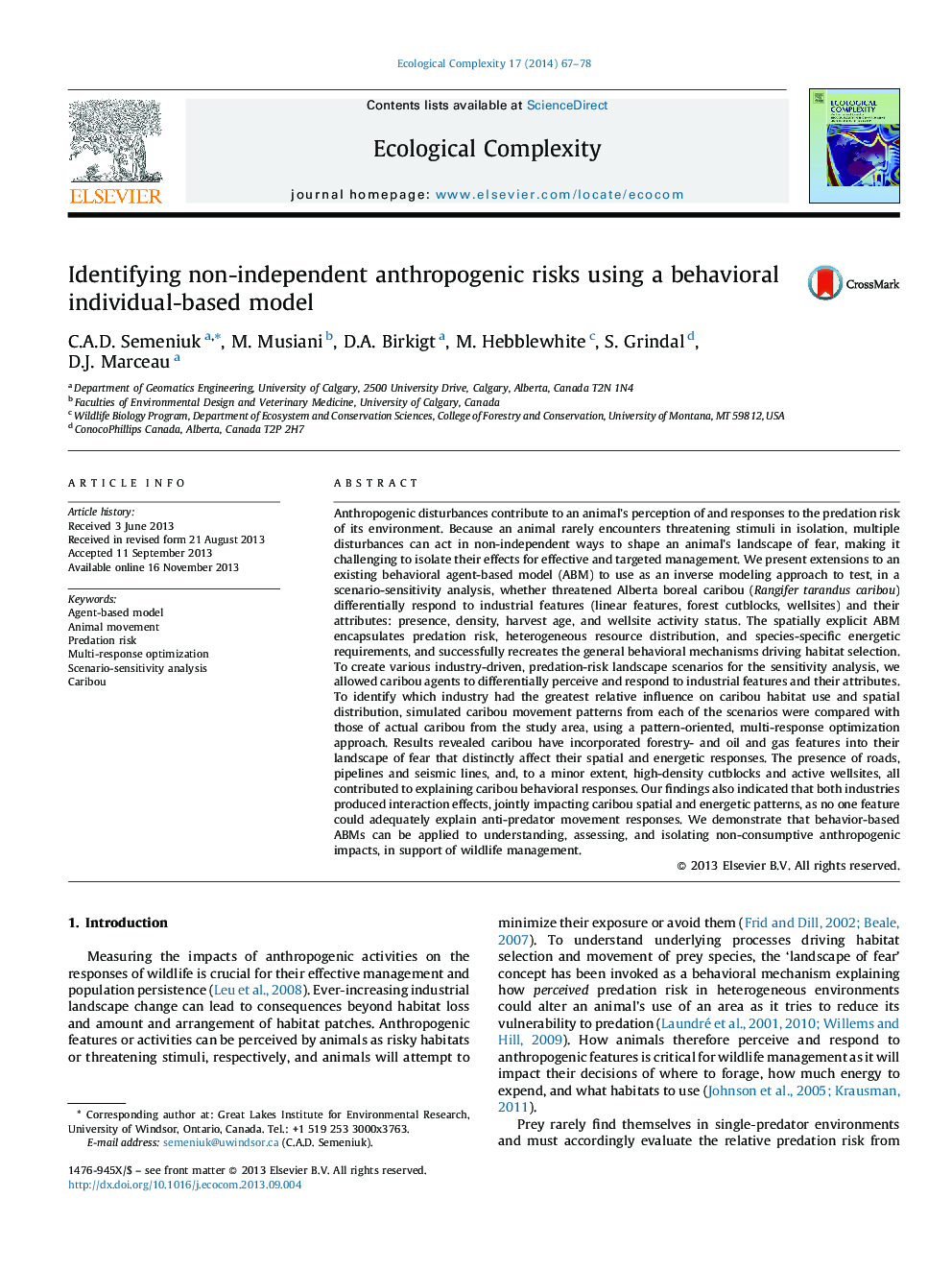| کد مقاله | کد نشریه | سال انتشار | مقاله انگلیسی | نسخه تمام متن |
|---|---|---|---|---|
| 4372467 | 1617097 | 2014 | 12 صفحه PDF | دانلود رایگان |
• Anthropogenic activities introduce features to the landscape that affect prey perception of predation risk.
• Independent contributions of multiple threatening stimuli are challenging to isolate.
• A behavioral agent-based model (ABM) was used in a scenario-sensitivity analysis to recreate actual caribou movement ecology.
• Agents were equally responsive to industrial activities but to differing extents, reflecting geographical and environmental constraints.
• ABMs can be applied to understanding and isolating non-consumptive anthropogenic impacts, in support of wildlife management.
Anthropogenic disturbances contribute to an animal's perception of and responses to the predation risk of its environment. Because an animal rarely encounters threatening stimuli in isolation, multiple disturbances can act in non-independent ways to shape an animal's landscape of fear, making it challenging to isolate their effects for effective and targeted management. We present extensions to an existing behavioral agent-based model (ABM) to use as an inverse modeling approach to test, in a scenario-sensitivity analysis, whether threatened Alberta boreal caribou (Rangifer tarandus caribou) differentially respond to industrial features (linear features, forest cutblocks, wellsites) and their attributes: presence, density, harvest age, and wellsite activity status. The spatially explicit ABM encapsulates predation risk, heterogeneous resource distribution, and species-specific energetic requirements, and successfully recreates the general behavioral mechanisms driving habitat selection. To create various industry-driven, predation-risk landscape scenarios for the sensitivity analysis, we allowed caribou agents to differentially perceive and respond to industrial features and their attributes. To identify which industry had the greatest relative influence on caribou habitat use and spatial distribution, simulated caribou movement patterns from each of the scenarios were compared with those of actual caribou from the study area, using a pattern-oriented, multi-response optimization approach. Results revealed caribou have incorporated forestry- and oil and gas features into their landscape of fear that distinctly affect their spatial and energetic responses. The presence of roads, pipelines and seismic lines, and, to a minor extent, high-density cutblocks and active wellsites, all contributed to explaining caribou behavioral responses. Our findings also indicated that both industries produced interaction effects, jointly impacting caribou spatial and energetic patterns, as no one feature could adequately explain anti-predator movement responses. We demonstrate that behavior-based ABMs can be applied to understanding, assessing, and isolating non-consumptive anthropogenic impacts, in support of wildlife management.
Journal: Ecological Complexity - Volume 17, March 2014, Pages 67–78
